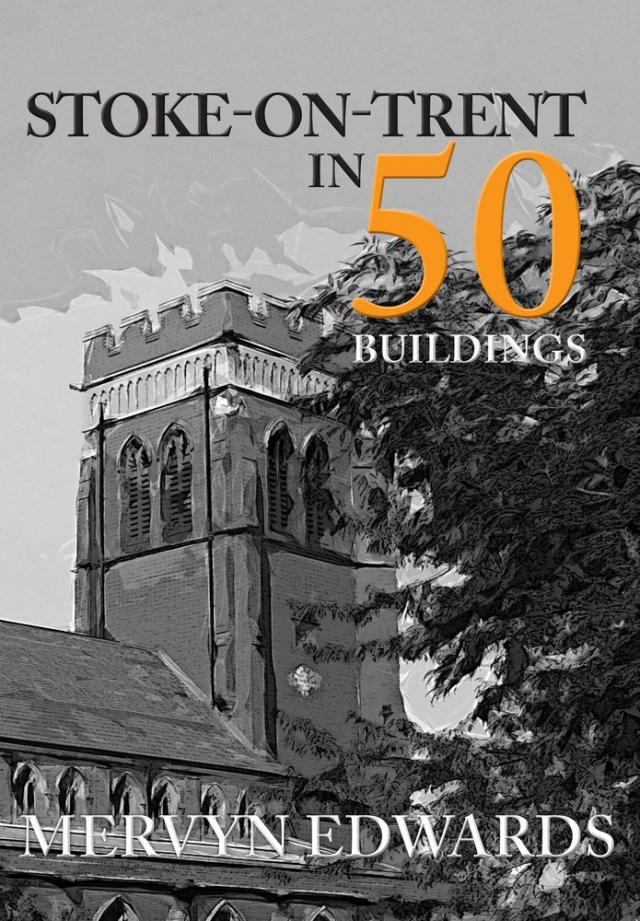Stoke-on-Trent in 50 Buildings
Book review

Stoke-on-Trent in 50 Buildings, Mervyn Edwards, Amberley, 2018, 96p, £14-99. ISBN 978-1-4456-7781-1
Mervyn Edwards records that there are fewer than 200 listed buildings in Stoke-on-Trent. The limited number of listed buildings is an immediate indication of the constraints under which he has been making his selection of fifty buildings for us to celebrate.
His selection basically reflects the character and energy of this historic industrial city which we tend to label as ‘The Potteries’. The fact that only two of the examples pre-date the industrial era is an indication in itself of the paucity of possible earlier evidence.
Anyone making such as selection will be a hostage to fortune and to critics who will be bound to complain about the omission of their specific favourite building.
Mervyn Edwards has provided a good selection, ranging from the Bethesda Chapel at Hanley [1819], remembered for its role in the BBC Restoration programme, to Tunstall Town Hall [1885] and the Middleport Pottery [1889], and he certainly does not exclude examples which have been of concern to architectural and local historians, such as the former St John the Evangelist Church at Hanley which has recently been revived as an antiques centre. His range is from the timber-framed Ford Green Hall [1624] to the Vodafone Contact Centre at Etruria Valley [2009] and with every entry has provided a good explanation of the historical development and modern role of each building.
However much I have valued this book and its selection, from my specialist research background I must argue that my choice for the exemplar public house or inn would not have been the Golden Cup at Hanley [1912]. My nomination would have to be The Leopard at Burslem, known historically as ‘The Savoy of the Midlands’, at which inn in 1765 Josiah Wedgwood is known to have met James Brindley to discuss the planning of the Trent and Mersey Canal.

